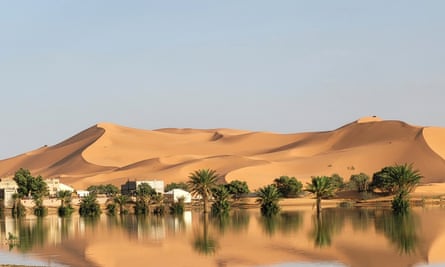Articles Menu

Oct.11, 2024
Dramatic pictures have emerged of the first floods in the Sahara in half a century.
Two days of rainfall in September exceeded yearly averages in several areas of south-east Morocco and caused a deluge, officials of the country’s meteorology agency said in early October. In Tagounite, a village about 450km(280 miles) south of the capital, Rabat, more than 100mm (3.9 inches) was recorded in a 24-hour period.
Satellite imagery from Nasa showed Lake Iriqui, a lake bed between Zagora and Tata that had been dry for 50 years, being filled up.
“It’s been 30 to 50 years since we’ve had this much rain in such a short space of time,’ Houssine Youabeb, an official of Morocco’s meteorology agency told the Associated Press.

Such rains, which meteorologists call an extratropical storm, may change the weather conditions in the region in the coming months and years. As the air holds more moisture, it promotes evaporation and provokes more storms, Youabeb said.
The flooding in Morocco killed 18 people last month, with the impact stretching to regions that had been affected by an earthquake last year. There were also reports of dammed reservoirs in the south-east region refilling at record rates throughout September.
The Sahara, which at 9.4m sq km (3.6m sq miles) is the world’s largest hot desert, stretches across a dozen countries in north, central and west Africa. Recurring drought has been a problem in many of these countries as extreme weather events are on the rise due to global heating. That has led to predictions from scientists that similar storms could happen in the Sahara in the future.

Celeste Saulo, the secretary general of the World Meteorological Organization, told reporters on Monday that water cycles across the world were changing with increasing frequency.
“As a result of rising temperatures, the hydrological cycle has accelerated. It has also become more erratic and unpredictable, and we are facing growing problems of either too much or too little water,” she said.
[Top photo: Still from Drone footage shows rare flooding in the Sahara desert]